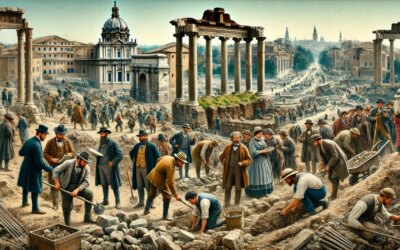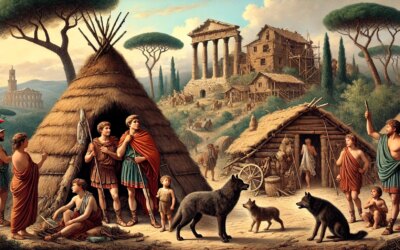Introduction
On a fateful day in 79 AD, the thriving Roman city of Pompeii met its sudden and violent end when Mount Vesuvius erupted, spewing ash, pumice, and toxic gases. Within hours, the once-bustling streets were buried beneath meters of volcanic debris, freezing the city in time. Today, Pompeii serves as a haunting window into the past, offering a remarkably preserved glimpse into ancient Roman life.
Pompeii Before the Disaster
Located near the Bay of Naples, Pompeii was a flourishing commercial hub, known for its villas, markets, and vibrant public spaces. Its citizens, ranging from wealthy patricians to merchants and slaves, lived in a city adorned with frescoes, theaters, and baths. Life was prosperous—until the mountain rumbled to life.
Warnings Ignored
Seismic activity had been recorded in the region for years, including a major earthquake in 62 AD. However, Romans did not fully understand the nature of volcanic eruptions, dismissing the tremors as ordinary occurrences.
The Eruption of Mount Vesuvius
On August 24, 79 AD, Mount Vesuvius violently erupted, sending a towering column of ash and debris into the sky. For hours, residents watched in awe and terror as the sky darkened. Then, waves of scorching pyroclastic flows—superheated gas and volcanic material—raced down the slopes, engulfing the city in minutes.
The Fate of Pompeii
Many attempted to flee, while others sought shelter in their homes. The intense heat and suffocating ash led to instant fatalities. Buildings collapsed under the weight of the debris, and the city was completely entombed within 24 hours. Nearby Herculaneum met a similar fate, though covered in a denser, lava-like material.
The Rediscovery of Pompeii
For centuries, Pompeii remained hidden beneath layers of ash, untouched and forgotten. It wasn’t until the 18th century that excavations began, revealing an astonishingly preserved city. Streets, homes, mosaics, and even the remains of its inhabitants offered archaeologists an unprecedented look at Roman daily life.
The Plaster Casts
One of the most haunting discoveries was the technique used to create plaster casts of victims. As bodies decomposed, they left hollow impressions in the hardened ash. Archaeologists filled these voids with plaster, capturing the final moments of Pompeii’s residents in chilling detail.
The Legacy of Pompeii
Pompeii stands as both a testament to nature’s destructive power and a treasure trove of historical insight. The preserved artifacts and frescoes provide unmatched knowledge of Roman art, culture, and society. Today, it remains one of the most visited archaeological sites in the world.
Lessons from the Past
Vesuvius is still an active volcano, posing a threat to the modern cities of Naples and its surroundings. The tragedy of Pompeii serves as a reminder of the importance of geological study and disaster preparedness.
Conclusion
The destruction of Pompeii was a catastrophe, but its preservation has given the modern world an invaluable historical record. Frozen in time, the city remains a poignant and powerful reminder of both human vulnerability and resilience.






